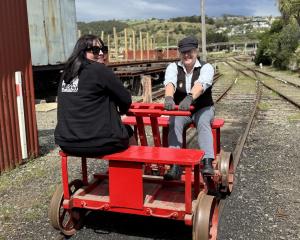
Oamaru Blue Penguin Colony research scientist Dr Philippa Agnew said while there were some who believed flipper bands on birds ``negatively impacted'' survival rates, she continued to have an open mind on the subject.
However, the increasing affordability of microchips and the possibilities with the new technology was tipping the scales.
``It is the way forward, it's better technology than using the flipper bands - it's just improvement in the technology that we have to mark birds,'' Dr Agnew said.
Some held fears that flipper bands were not good for the birds and believed the bands could interfere with the birds' ``streamlining''.
Another fear was that the shiny metal flipper bands themselves were attractants for marine predators.
But Dr Agnew said the little blue penguins at the colony had not shown what would be tell-tale injuries of attacks from marine predators that found the bands alluring.
Since 2014, Dr Agnew had been monitoring the survival rates of banded birds, birds that had their bands removed and birds that had never been banded, and only ever been microchipped.
And while the colony was ``really collecting some good data around those different survival rates'', that study would require a few more years to be completed.
The marine environment off the coast of Oamaru was ``really productive'' and Oamaru's little blue penguins typically showed ``good survival rates''.
With the number of penguins microchipped rather than flipper banded at the colony approaching 50%, roughly 15% of adult birds did not return to the colony each year and were presumed dead - an 85% survival rate.
But microchipping birds - using the same technology used to microchip domestic dogs and cats - ``definitely'' had other benefits, including making birds' ``foraging durations'' easier to track.
The colony was equipped with one ``fence reader'' at present, which recorded the ID of the bird and the date and the time it passed through the fence into the colony.
``But ideally, what would be really fantastic - and we'd potentially be looking to try to fund - is some sort of `weigh platform', so that every time a bird walks across this weigh platform, the reader registers the individual, but also its weight as it walks across,'' Dr Agnew said.
The microchipping of chicks this year could begin soon. Thebreeding season is under way and there were 24 eggs at the colony after last week's monitoring. One egg ``pipped'' last week, so the colony could deliver its first chick of the season during this week's monitoring rounds.












